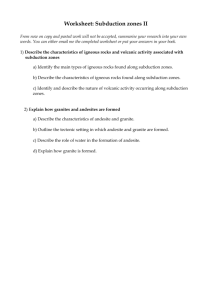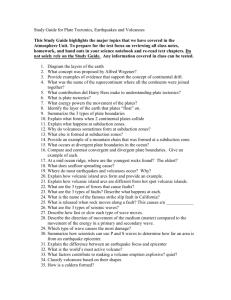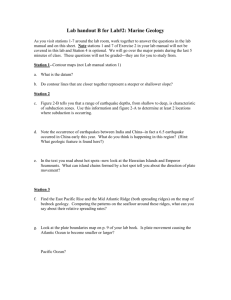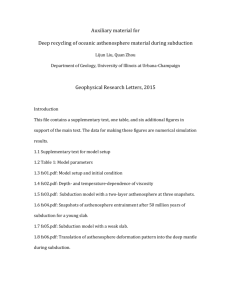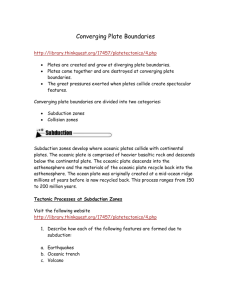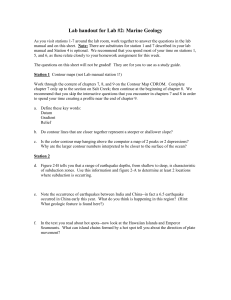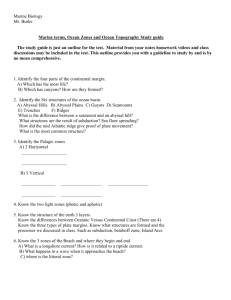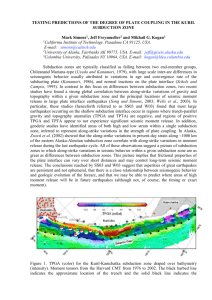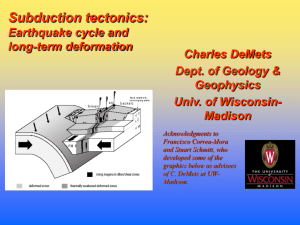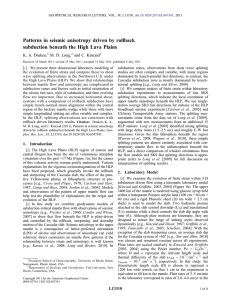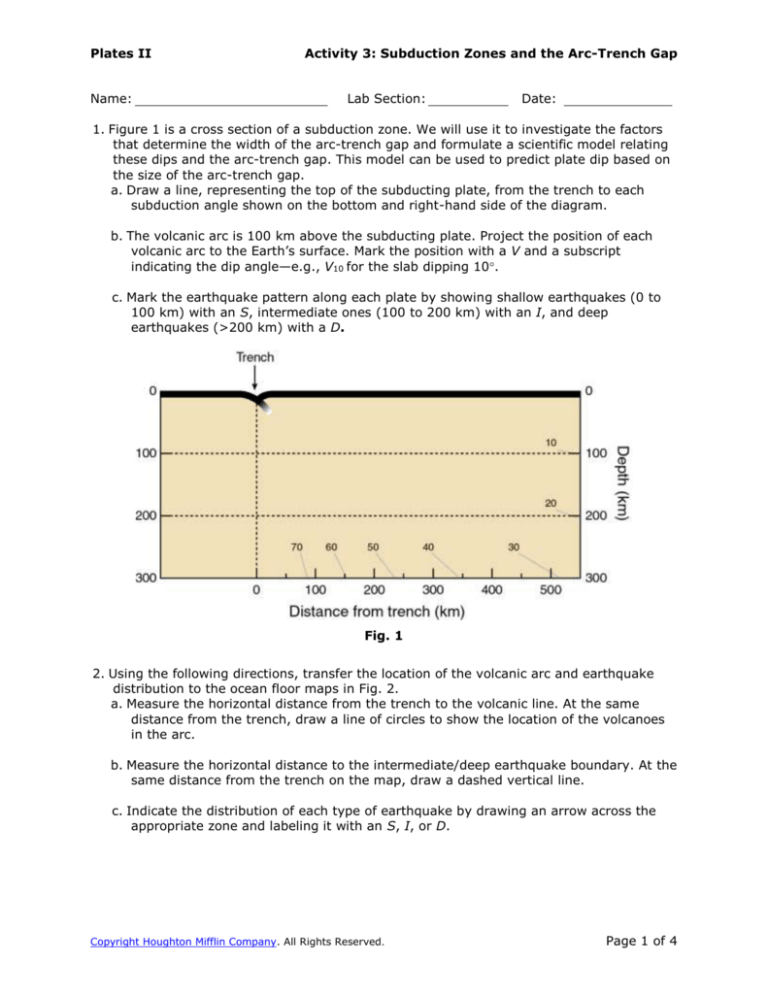
Plates II
Name:
Activity 3: Subduction Zones and the Arc-Trench Gap
Lab Section:
Date:
1. Figure 1 is a cross section of a subduction zone. We will use it to investigate the factors
that determine the width of the arc-trench gap and formulate a scientific model relating
these dips and the arc-trench gap. This model can be used to predict plate dip based on
the size of the arc-trench gap.
a. Draw a line, representing the top of the subducting plate, from the trench to each
subduction angle shown on the bottom and right-hand side of the diagram.
b. The volcanic arc is 100 km above the subducting plate. Project the position of each
volcanic arc to the Earth’s surface. Mark the position with a V and a subscript
indicating the dip angle—e.g., V10 for the slab dipping 10.
c. Mark the earthquake pattern along each plate by showing shallow earthquakes (0 to
100 km) with an S, intermediate ones (100 to 200 km) with an I, and deep
earthquakes (>200 km) with a D.
Fig. 1
2. Using the following directions, transfer the location of the volcanic arc and earthquake
distribution to the ocean floor maps in Fig. 2.
a. Measure the horizontal distance from the trench to the volcanic line. At the same
distance from the trench, draw a line of circles to show the location of the volcanoes
in the arc.
b. Measure the horizontal distance to the intermediate/deep earthquake boundary. At the
same distance from the trench on the map, draw a dashed vertical line.
c. Indicate the distribution of each type of earthquake by drawing an arrow across the
appropriate zone and labeling it with an S, I, or D.
Copyright Houghton Mifflin Company. All Rights Reserved.
Page 1 of 4
Plates II
Activity 3: Subduction Zones and the Arc-Trench Gap
Fig. 2
3. The map views clearly show how the angle of the subducting plate determines the width
of the arc-trench gap. Using the information you entered on the maps, it is possible to
construct a scientific model that can predict the structure of subduction zones when you
do not know the subsurface structure.
Copyright Houghton Mifflin Company. All Rights Reserved.
Page 2 of 4
Plates II
Activity 3: Subduction Zones and the Arc-Trench Gap
a. Measure the width of the arc-trench gap for each subduction angle and enter your
measurements in Table 1.
b. Plot the width of the arc-trench gap versus the subduction angle on Fig. 3.
c. Draw a smooth curve through the data points.
d. From this plot, estimate the dip of the subducting plate if the arc-trench gap is 175
km.
e. For a trench gap of 175 km, and using the dip you determined in part d, estimate the
farthest extent of
(1) Shallow earthquakes:
(2) Intermediate
earthquakes:
Table 1
Case
Subduction
zone dip
1
10
2
20
3
30
4
40
5
50
6
60
7
70
Arc-trench
gap (km)
Copyright Houghton Mifflin Company. All Rights Reserved.
Fig. 3
Page 3 of 4
Plates II
Activity 3: Subduction Zones and the Arc-Trench Gap
4. How does the dip of the subduction zone influence the arc-trench gap?
5. Where are most subduction zones located globally?
6. Why is this distribution so important in terms of geologic hazard planning?
7. What two geologic hazards are directly associated with subduction zones?
Copyright Houghton Mifflin Company. All Rights Reserved.
Page 4 of 4

